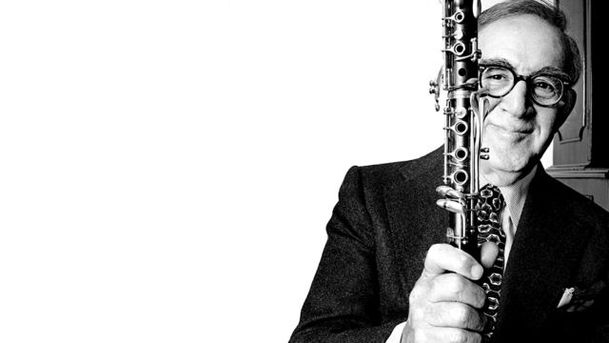Benny Goodman: King of Swing - Episode 1

Curtis Stigers remembers the clarinettist and bandleader Benny Goodman in his centenary year. One of the finest clarinet players in the world, Goodman practised his art at the highest levels in both jazz and classical music. He was a bandleader who strove for, and achieved, perfection through tireless rehearsals of the jazz ensembles he created over the decades. He was also a complex man, prone to unpredictability, who overcame an impoverished upbringing and the early death of his father to become "The King Of Swing". Benny's story begins in Chicago, 100 years ago on 30 May 1909, where the Goodman family lived in the Maxwell Street ghetto. There wasn't enough work to sustain Benny's father in his original trade as a tailor but he saw an opportunity for his children and, at the age of 10, Benny was enrolled for music lessons at the local synagogue. What happened then was remarkable. Benny practised all the time and, in a matter of 8 or 9 years, he progressed to being one of the best clarinettists anywhere. He was hired by the drummer and bandleader Ben Pollack and his first official recording, When I First Met Mary, was made with Pollack's band on 9th December 1926. Tragically, that same evening, Benny's father was struck by an automobile when alighting from a Chicago streetcar. His skull was fractured, and he died the next day. Boyhood friend Jim Mahr recalls: "I would say that his childhood desire to achieve and please his father may very well have been the deepest driving force in Benny's life and I think his greatest disappointment in life came when he was top of the heap with great figures and his father wasn't alive. That bothered him very very much". Benny became the family's chief breadwinner at the age of 17 but through this emotional crisis, he carried on building a local reputation. When he was still in his teens, before anybody knew him outside of Chicago, the Melrose company published a collection of Goodman exercises. The only instrumentalist they'd ever published that way before was Louis Armstrong. Episode one takes us up to 1928, as Benny is about to leave for New York, and is interspersed with his music. This includes a seldom-heard recording of Five Foot Two, the first opportunity to hear Benny himself, which was made privately in the kitchen of his friend Earl Baker. The series features brand new interviews with jazz critic Gary Giddins; Prof. Dan Morgenstern (of the Institute for Jazz Studies at Rutgers University); clarinettist and saxophonist Ken Peplowski; Loren Schoenberg (of the Jazz Museum in Harlem); singer Louise Tobin; Sir John Dankworth and writer John Hancock. There are also rare archive contributions from Benny Goodman himself; Peggy Lee; Buddy Greco; his daughter Rachel Goodman; boyhood friend Jim Maher; biographer Ross Firestone; record executives John Hammond; bandleaders Artie Shaw, Teddy Wilson and Lionel Hampton; and the musicians Bob Wilber, Jerry Jerome, Louis Bellson, Nick Fatool, Jimmy Maxwell; Milt Bernhart and singer Helen Forrest.